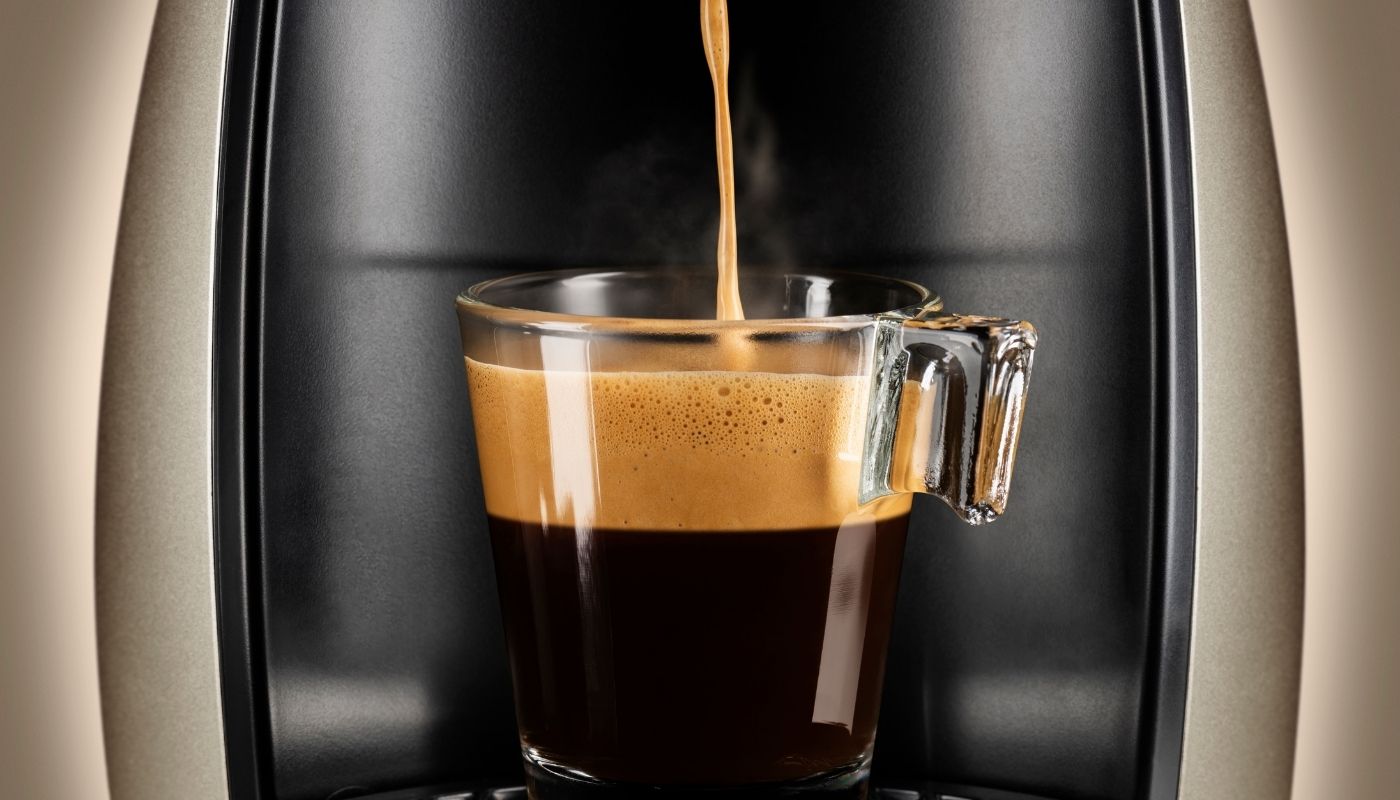It’s a sad day when you’re ready to replace your Keurig coffee maker but if it is malfunctioning or not brewing the way that it used to, then you need to purchase a new one. You might be thinking “how long should a coffee maker last?” and what the average lifespan of an automatic coffee machine is? The truth is, there really isn’t any set lifespan for these machines. However, here are some signs that will tell you it may be time for a replacement!
Is Your Keurig Coffee Maker Needing Replacement? Here are Signs You’re Ready for a New One!
A coffee maker is meant to last anywhere from six months to two years, depending on how often you use it and the quality of your water. If your machine has been used at least once per day since its purchase date or if it’s more than two years old, chances are that time has come! There may be some signs in play that will help you determine whether or not replacement is necessary.
- Your K-Cups no longer fit into the holder. This isn’t necessarily indicative of malfunction but rather just an indicator that they’ve aged over time and need replacing soon.
- You notice white powder residue around where the K-Cups are inserted. This could be a sign that the heating element is burning too hot, or it may even indicate that you’re using tap water in your Keurig coffee maker instead of distilled water (tap water contains minerals and chemicals).
- Your Keurig Coffee Maker is not brewing at full capacity anymore. The typical lifespan for an automatic coffee machine can vary from six months to two years depending on how often it’s used and what type of quality its owner prefers. If you notice any signs like white powder residue around where the K-cups are inserted, replacement might be necessary!
How Long Should Your Coffee Maker Last? Tips To Extend Its Lifespan!
A lot of people ask us “How long should an automatic coffee maker last?” or “What is the average lifespan of a coffee machine?” When it comes to this question, there are many factors that determine how long your Keurig will work. How Often You Use Your Keurig Coffee Maker? If you use your Keurig often (every day), we recommend replacing it every six months just so that everything runs smoothly again and nothing breaks down on accident.
One way is to clean its parts regularly (such as filters) since grime can build up over time which affects performance and longevity, or one could invest in an automatic descaler. However, this is not always necessary if you’re diligent about cleaning the machine itself from time to time even with hard water!
Keurig Problems? How To Fix Them!
- Unplug the unit and unplug from a wall power source; Give it about 60 seconds for coffee left in the tank, heating element, or water reservoir to cool down; Turn off the circuit breaker switch at fuse box if necessary (make sure that all electricity is turned off); Remove carafe cup & filter basket then remove the lid on the top cover; Clean out any debris with needle-nose pliers using vacuum cleaner tube extension kit, be careful not to get too close when cleaning as heating element may still have some residual heat inside! Replace this part before plugging back up again. Make sure there are no other signs of breakages like leaking water or coffee grounds, in that case, it might be time for a new machine.
- We’ve all had our share of problems with our favorite coffee machines over the years, some minor, others major enough for the replacement. Here’s what you need to know when things go wrong with your Keurig. The first sign something might be amiss with your Keurig is when it simply stops brewing. This can be a sign of either clogging or an internal issue, if the machine has been used properly and cleaned after every use, this may just be a simple fix.
- To find out what’s going on with your Keurig coffee maker, try one of these fixes. Check for any obstructions in the water reservoir (if you have one) by making sure that there are no kinks or creases in the tube leading to it). If not, check for debris blocking the inside spout of your brewer, remove anything visible using caution as to not damage part of the device. Another way to clear out blockages is through running vinegar through two consecutive brew cycles and then running plain water through it.
- Checking for any obstructions in the water reservoir can help with clogging issues. If you have a Keurig machine that does not seem to be brewing, as usual, this may be your problem! To find out what’s going on with your device, try one of these fixes. Remove anything visible from the inside spout using caution (to avoid damaging parts) by checking for kinks or creases. Another solution is to run vinegar two consecutive times first before running regular water. This will clear blocks or debris within the Keurig coffee maker. If there are no blockages seen when conducting these simple checks, consider replacing your Keurig brewer altogether!
What to do when your Keurig coffee maker stops brewing?
If you’ve tried all of our above fixes but still can’t brew anything from your machine, it’s time to say goodbye! Before throwing out or donating an old brewer with many hours under its belt, give it one last try by running plain water through it. This will help ensure that no debris has been left behind and there is no residual buildup blocking any parts in the system, after this final effort if nothing happens then consider getting rid of your device as soon as possible because something major may be wrong. If this does work, however congrats, you get to keep your brewer!
How long are K-Cups good for when prepared in a dish?
Keurig recommends using cups within 12 months of their date codes. See instructions on the packaging for more information about how to prepare them.
What to Do When Your Keurig Stops Brewing
When your coffee maker stops brewing, it may be time for a replacement. Here are the signs that you need a new one. Your machine has stopped producing hot water completely or is making strange noises when using the hot water feature. You notice any smells coming from it like burning rubber. The brewer automatically shuts off and won’t turn back on without unplugging/replugging in (even if there’s plenty of power left). It leaks water around where the cup sits even after proper installation. There’s no more pressure getting through. There are clogs, this can happen if you’re not cleaning out old grounds properly or have too many coffee pods in the machine.
What Is The Average Lifespan Of A Keurig?
Most K Cup models should last for around three years before needing replacement because they are more affordable than the higher-end models.
Best Practices For Your Coffee Maker
- Regularly clean the machine with a mixture of vinegar and water (to remove lime deposits)
- Use only filtered or bottled water to brew coffee, as tap can contain minerals that affect your final product. The best option is distilled or reverse osmosis filtration, but it’s pricey! If you’re not willing to make that investment, at least use purified drinking water in order to avoid any impurities found in city supply systems. This will also save you money because store-bought filters are expensive over time if all you have on hand is unfiltered tap water! Occasionally descale your appliance for long-lasting smooth operation by boiling two cups of white vinegar mixed with four cups of water. Cover the inside of a carafe with baking soda and pour in boiling vinegar mixture, wait for it to cool down before pouring back into your coffee maker reservoir
The average lifespan of a Keurig coffee maker is about five years. However, you can extend its longevity with these helpful tips! Our blog has the answer to this question, what are some signs that your coffee maker needs replacement? We have listed all different reasons in one article on our blog so be sure to check it.
Frequently Asked Questions
How to do keurig fuse replacement?
STEP 1 Unplug the Drip coffee Maker.
STEP 2 Remove the top cowl.
STEP 3 Remove four nook Screws and do away with the cover.
STEP 4 Locate Thermal Fuses and get rid of them from Harness.
STEP 5 Remove the Plastic cowl.
STEP 6 Reduce the Thermostat Wires.
STEP 7 Deploy a New wire Connection assembly with metallic Clips.
STEP 8 Reassemble the coffee maker.





